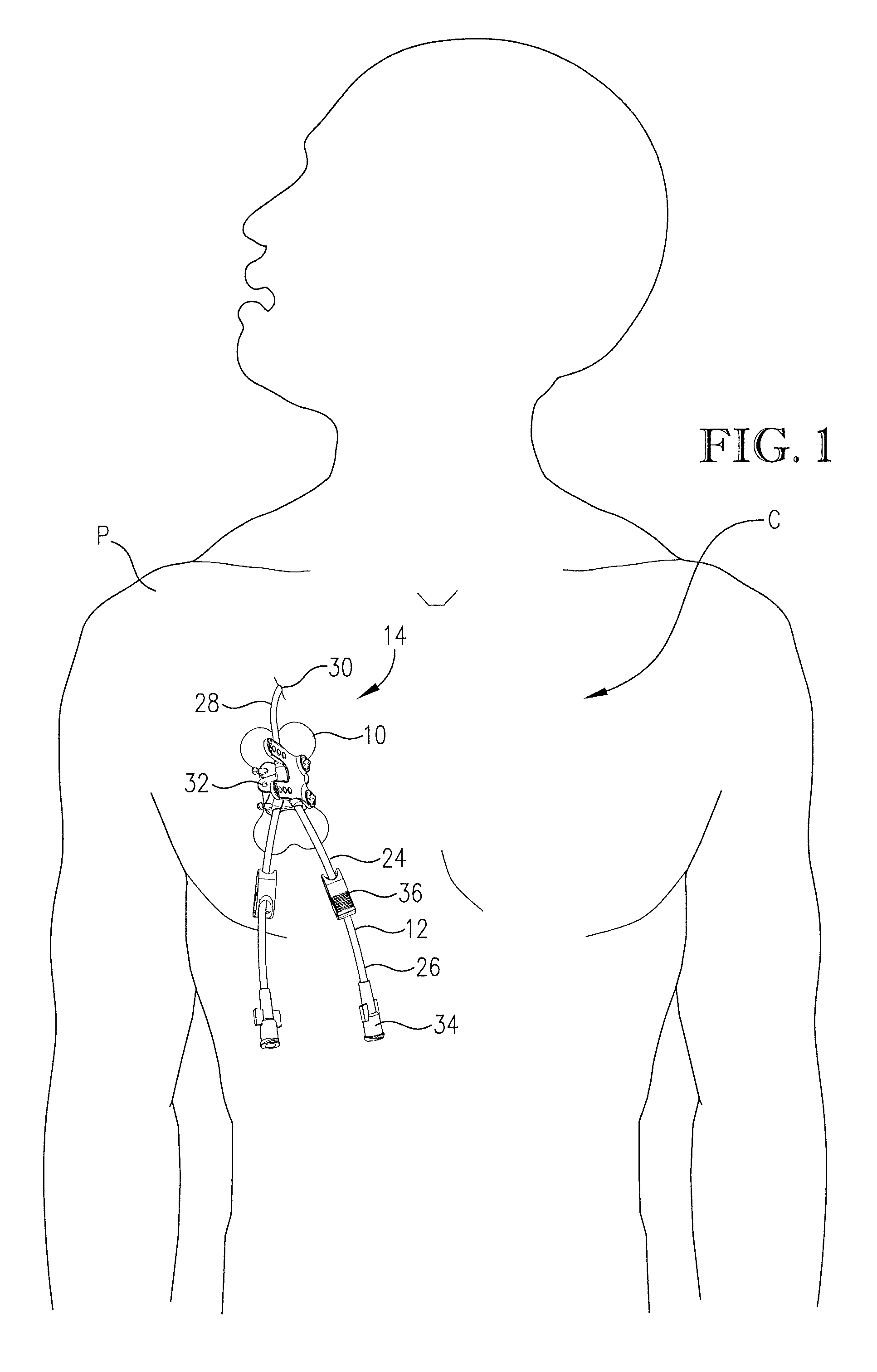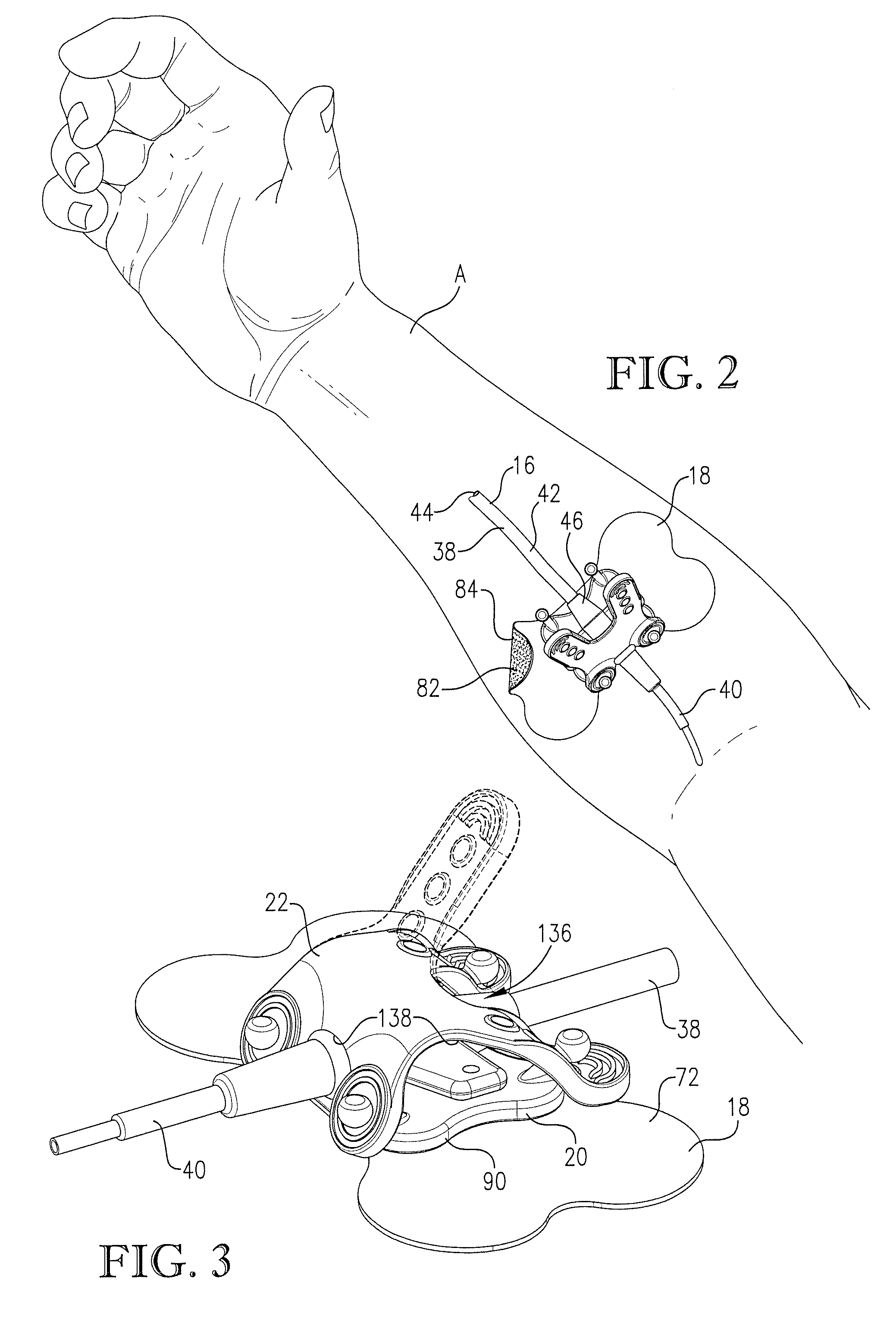Intravenous catheter anchoring device
a catheter and anchoring technology, applied in the direction of intravenous devices, catheters, infusion needles, etc., can solve the problems of difficult catheter attachment, difficult to fix the catheter, and requiring precise, two-handed manipulation
- Summary
- Abstract
- Description
- Claims
- Application Information
AI Technical Summary
Benefits of technology
Problems solved by technology
Method used
Image
Examples
second embodiment
In FIG. 8, the present invention is an intravenous catheter anchoring assembly 200 including an alternative platform 202. The platform 202 includes a base 204 presenting an upper surface 206 and connectors 208. The base 204 further includes rib-like protrusions 210 forming part of the upper surface 206. The protrusions 210 are parallel to each other and extend between primary attachment sides 212 of the platform 202 for securing the catheter (not shown) therebetween. The protrusions 210 are preferably molded with the rest of the base 204, but could alternatively be machined or separately formed and then attached without departing from the principles of the present invention.
third embodiment
In FIG. 9, the present invention is an intravenous catheter anchoring assembly 300 including an alternative platform 302. The platform 302 includes a base 304 presenting an upper surface 306 and connectors 308. The base 304 further includes a concave depression 310 defining a curvilinear portion of the upper surface 306. The shape of the depression 310 is preferably configured to receive the catheter hub (not shown). While the illustrated depression 310 is shaped to receive a variety of catheter hubs, the depression 310 could be alternatively shaped to receive a particular catheter hub so that the depression 310 is form-fitting. The depression 310 is preferably molded with the rest of the base 304 but could also be machined or separately formed and then attached to the upper surface 306.
FIGS. 10-14 illustrate several alternative embodiments of the present invention. These alternative embodiments are directed to anchoring assemblies incorporating alternative retaining straps.
fourth embodiment
In FIG. 10, the present invention is an intravenous catheter anchoring assembly 400 including an alternative retaining strap 402. The retaining strap 402 comprises a body 404 including pull-tabs 406 and presenting upper and lower surfaces 408,410. The body 404 further includes a spherical protrusion 412 forming part of the lower surface 410. The protrusion 412 is shaped to press against the catheter hub (not shown) when the retaining strap 402 is coupled to the platform (not shown). The protrusion 412 is preferably compressible to the extent that it is compressed during use of the assembly 400, whereby gripping of the catheter is further enhanced.
PUM
 Login to View More
Login to View More Abstract
Description
Claims
Application Information
 Login to View More
Login to View More - R&D
- Intellectual Property
- Life Sciences
- Materials
- Tech Scout
- Unparalleled Data Quality
- Higher Quality Content
- 60% Fewer Hallucinations
Browse by: Latest US Patents, China's latest patents, Technical Efficacy Thesaurus, Application Domain, Technology Topic, Popular Technical Reports.
© 2025 PatSnap. All rights reserved.Legal|Privacy policy|Modern Slavery Act Transparency Statement|Sitemap|About US| Contact US: help@patsnap.com



